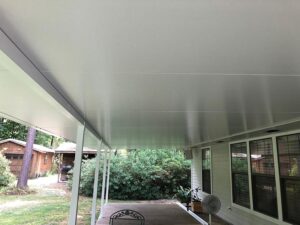As a home contractor in Memphis, your truck is not just a vehicle; it’s your lifeline to success. It transports your tools, materials, and workforce to job sites, ensuring timely project completion and client satisfaction. However, accidents happen, and when your truck suffers irreparable damage, navigating the process of filing a total loss claim can be daunting. In this guide, we’ll explore four essential ways Memphis home contractors can efficiently file a total loss claim for their trucks, providing clarity and peace of mind in times of uncertainty.
Documenting the Damage
When your truck is involved in an accident or experiences significant damage, documenting the extent of the harm is crucial. As soon as it’s safe to do so, take detailed photographs and videos of the wreckage from multiple angles. Be sure to capture any visible damage to the exterior, interior, and mechanical components. Additionally, gather relevant documentation such as police reports, witness statements, and repair estimates to support your claim.
Contacting Your Insurance Provider
Once you’ve documented the damage, promptly contact your insurance provider to initiate the claims process. Be prepared to provide detailed information about the incident, including the date, time, and location of the accident, as well as any relevant documentation you’ve gathered. Your insurer will likely assign an adjuster to assess the damage and determine whether your truck qualifies as a total loss according to the terms of your policy.
Understanding Total Loss Criteria
In Tennessee, a vehicle is typically considered a total loss if the cost of repairs exceeds a certain percentage of its pre-accident value. This threshold, known as the total loss threshold, can vary depending on your insurance provider and policy terms. Additionally, factors such as the age, condition, and mileage of your truck will influence the total loss determination. Familiarize yourself with your policy’s terms and conditions to understand what criteria must be met for your truck to be deemed a total loss.
Negotiating the Settlement
Once your insurer has determined that your truck is a total loss, they will offer you a settlement based on its pre-accident value minus any applicable deductibles or depreciation. It’s essential to carefully review the settlement offer and, if necessary, negotiate with your insurer to ensure you receive fair compensation for your loss. Consider obtaining independent appraisals or consulting with legal counsel to assess the adequacy of the settlement offer and advocate for your best interests.
Conclusion
Filing a total loss Memphis claim for your truck as a home contractor can be a complex and stressful process. However, by documenting the damage, contacting your insurance provider, understanding total loss criteria, and negotiating the settlement, you can navigate the process with confidence and ensure you receive fair compensation for your loss. Remember to stay informed, advocate for yourself, and rely on trusted professionals for guidance and support along the way. With diligence and perseverance, you can overcome the challenges of filing a total loss claim and focus on rebuilding your business and serving your clients with excellence.











